
Published: Last Updated:
Readtime: 13 min
Every product is carefully selected by our editors and experts. If you buy from a link, we may earn a commission. Learn more. For more information on how we test products, click here.
Names like Rapide, Reventón, and Roma carry weight, but Vanquish is the one to rule them all. Introduced by Aston Martin at the turn of the millennium with the launch of the original Vanquish (2001), it’s become a designation for the brand’s top-of-the-range sports cars.
Habitually V12-powered, that continues here with the new vehicle that says “that’s cute” to the twin-turbo V8 from the DB12 and slots (squeezes) a 5.2-litre V12 twin-turbo engine into the bay. That engine makes it one of the most powerful cars on sale with a class-leading 835PS (824HP, 614kW) of power and 1,000Nm of torque. With traction, it will launch from 0-100km/h time of 3.3 seconds and go on to a top speed of 214mph. It’s a missile, and that’s coming from a person who just about cracked 300km/h in a Lamborghini Revuelto.
Not only is it the fastest series production car in the brand’s 111-year history, with one of the coolest names in automotive, but it’s drop-dead gorgeous. You want to spend just as much time behind the wheel as you do staring at it. The best part? I’ve just spent a few days driving it around Sydney. Here’s why Aston Martin has millionaires lining up to secure a piece of the annual 1,000-car production run.
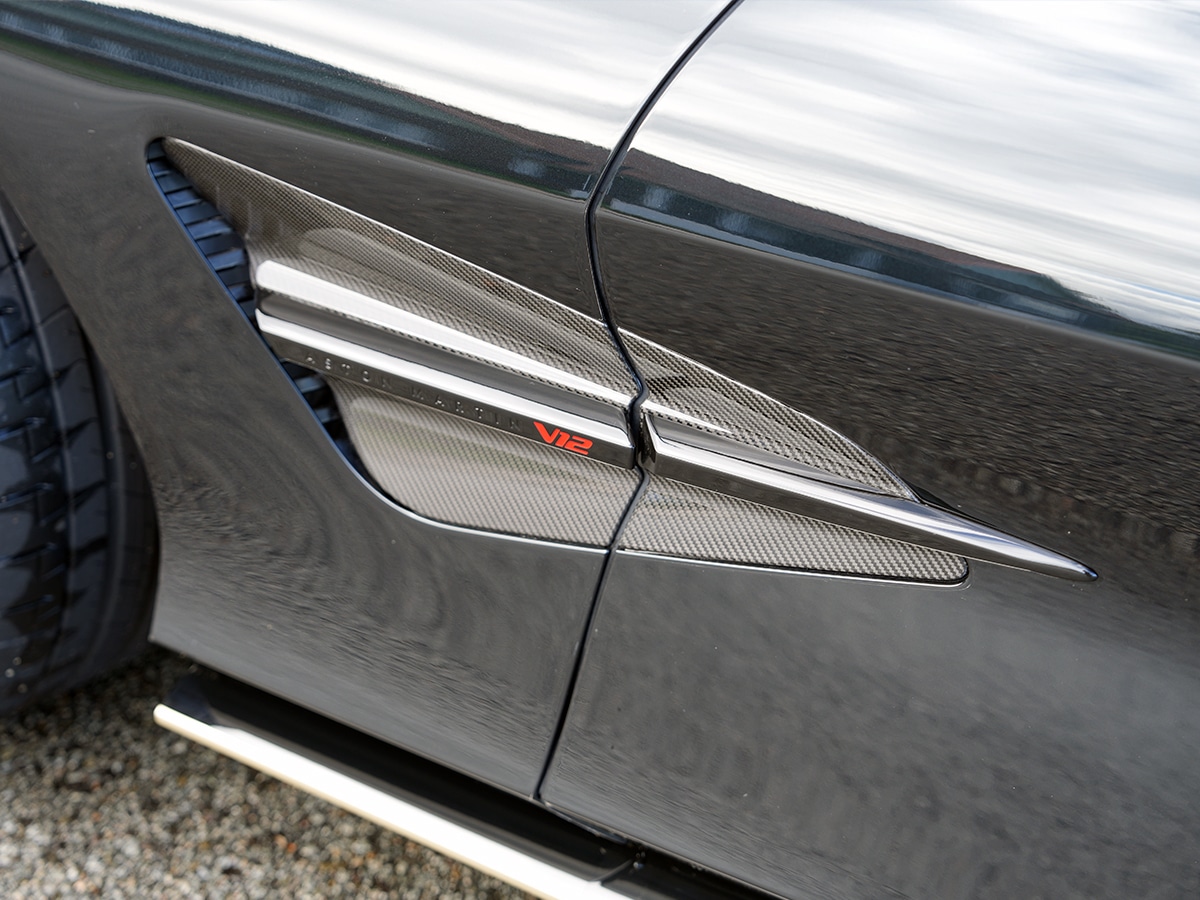
Price and Competition
The 2025 Aston Martin Vanquish is priced from AUD$737,000 plus on-road costs in Australia.
That makes it significantly more expensive than the DB12 (AUD$455,000 plus on-roads) but less expensive than its main competitor in the Ferrari 12Cilindri (AUD$803,500 plus on-roads).
None of this really matters to buyers, because just like a Hermes Birkin, Patek Philippe, or V12 Ferrari, the Vanquish will only be available to the brand’s top clients who will fight to access the annual production run of 1,000 cars. Typically, cars go to the highest bidder, and I’d be surprised if a Vanquish ends up in any buyer’s garage for less than $1 million after options.
This is one of the most expensive new cars on sale in Australia. It’s beaten only on price by the aforementioned Ferrari 12Cilindri (AUD$803,500 plus on-roads), Lamborghini Revuelto (AUD$987,000 plus on-roads), and a handful of Rolls-Royces, including the Spectre (AUD$770,000 plus on-roads), Cullinan (AUD$803,500 plus on-roads), and Black Badge Ghost Series II (AUD$777,000 plus on-roads).
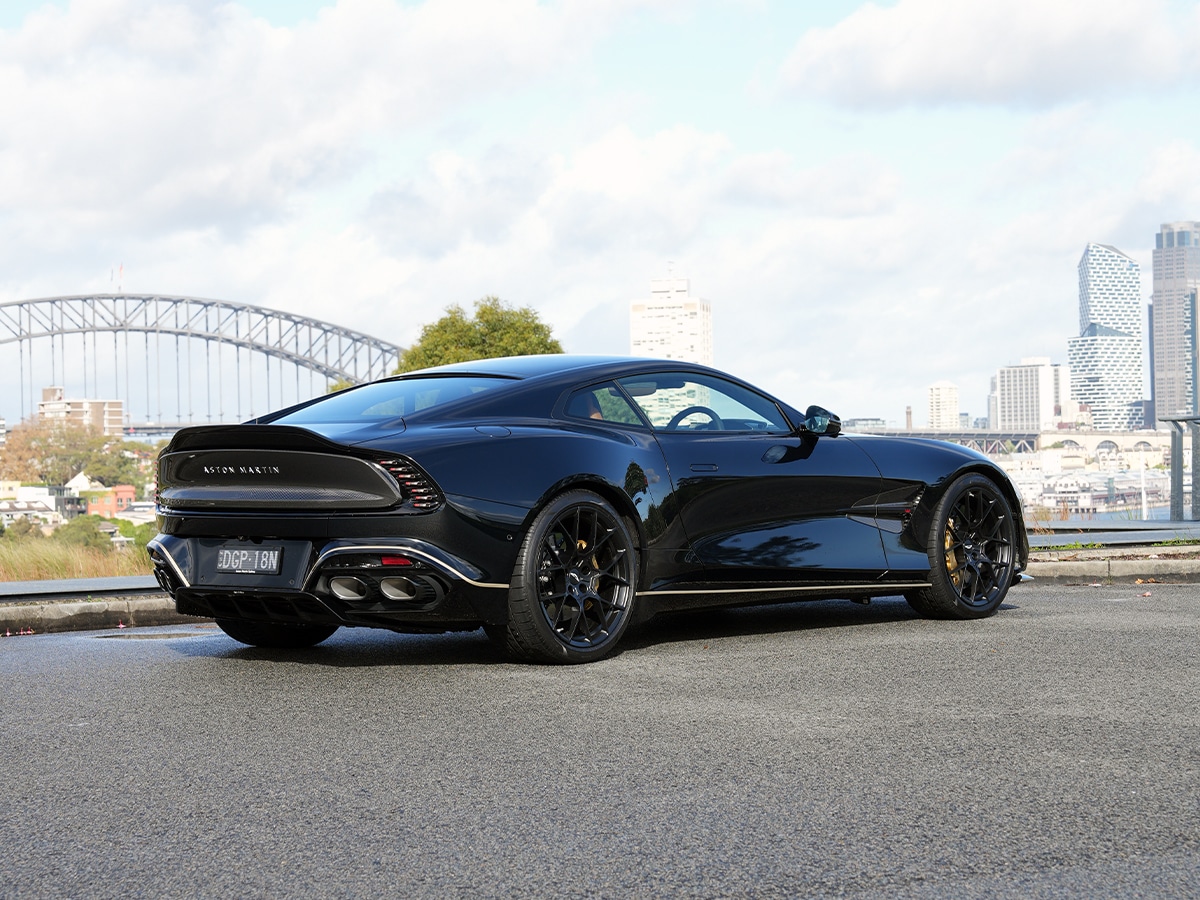
Exterior Design and Presence
That’s a looooooooong bonnet! When I wrote the news story at launch, I was on the fence about the looks, mainly the proportions of that nose, but then I saw it in person.
This is a painfully attractive car, especially in this black-on-black spec, and the combination of bonnet, roofline, and wide rear arches (+10mm vs. DBS 770 Ultimate) with the integrated decklid spoiler, full-width diffuser, and “Shield” panel that appears to float above those aggressive exhaust outlets is nothing short of automotive art.
Down the side of the car, the signature side strake is integrated into a sculpted panel (featured here in carbon fibre) with the V12 logo in red, and above it, gorgeous frameless door mirrors that you most certainly wouldn’t want to hit.
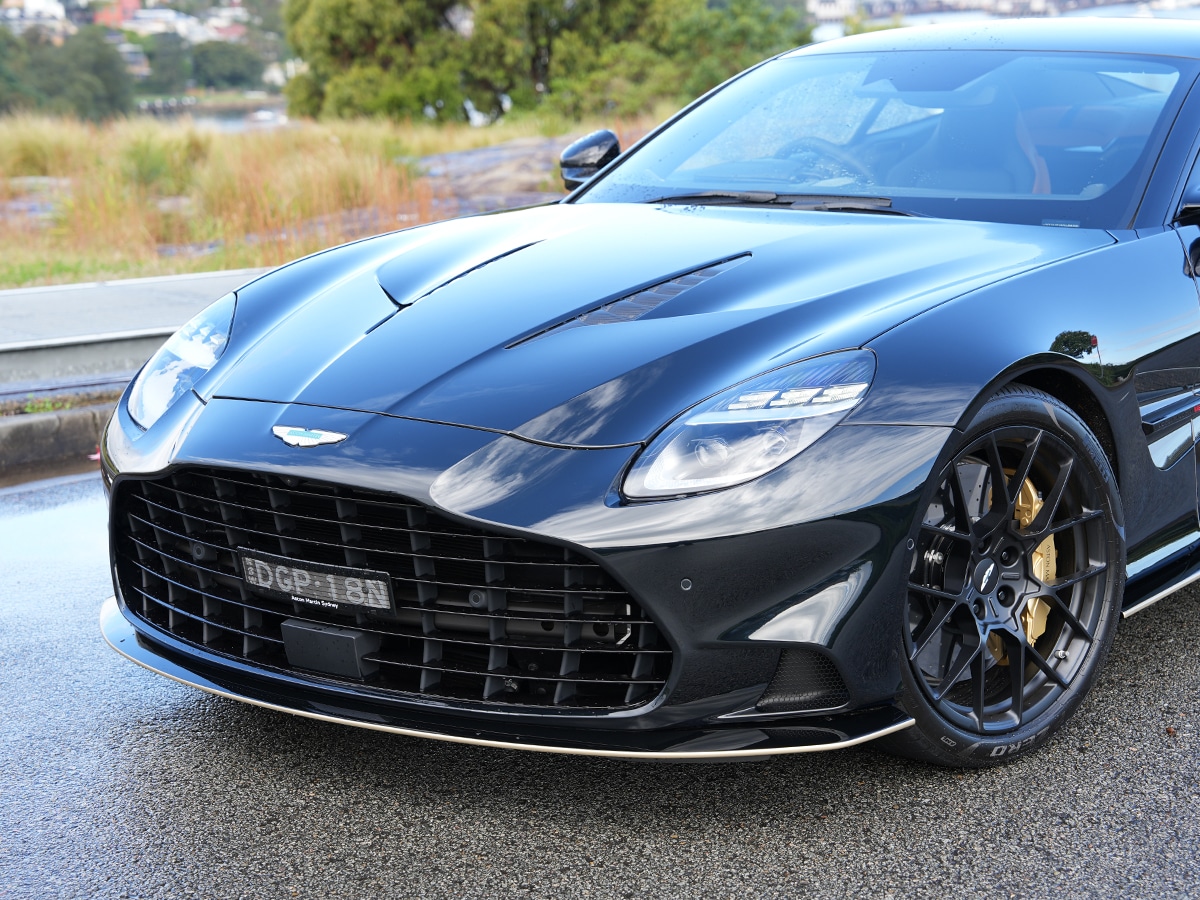
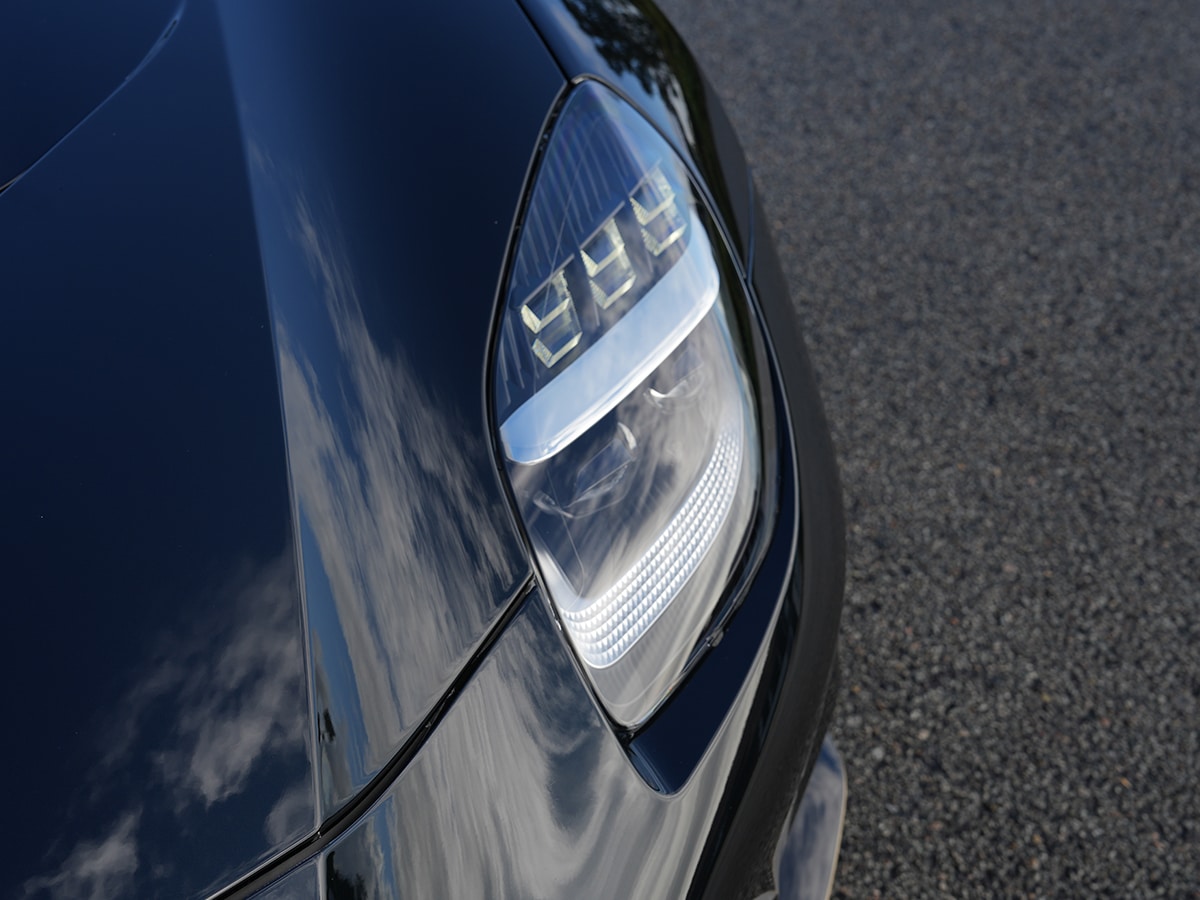
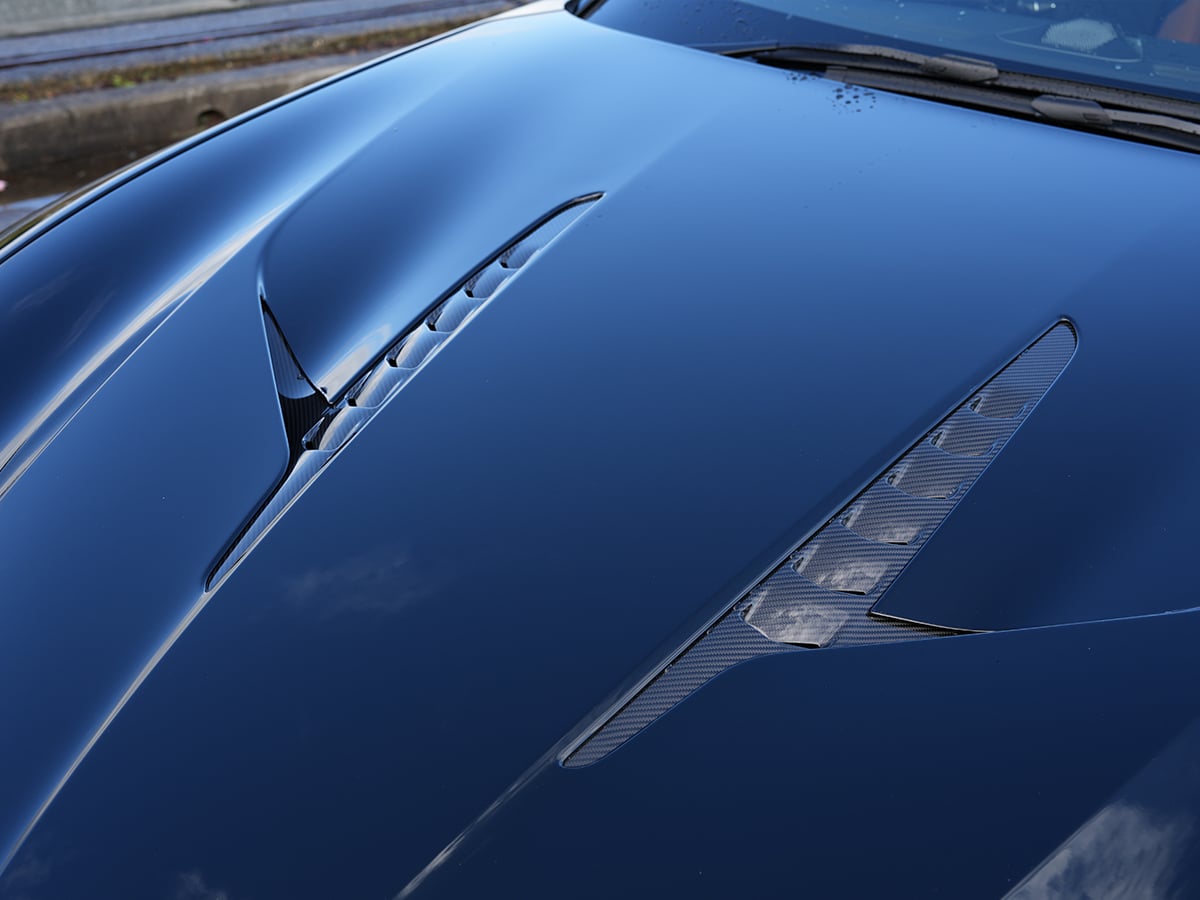
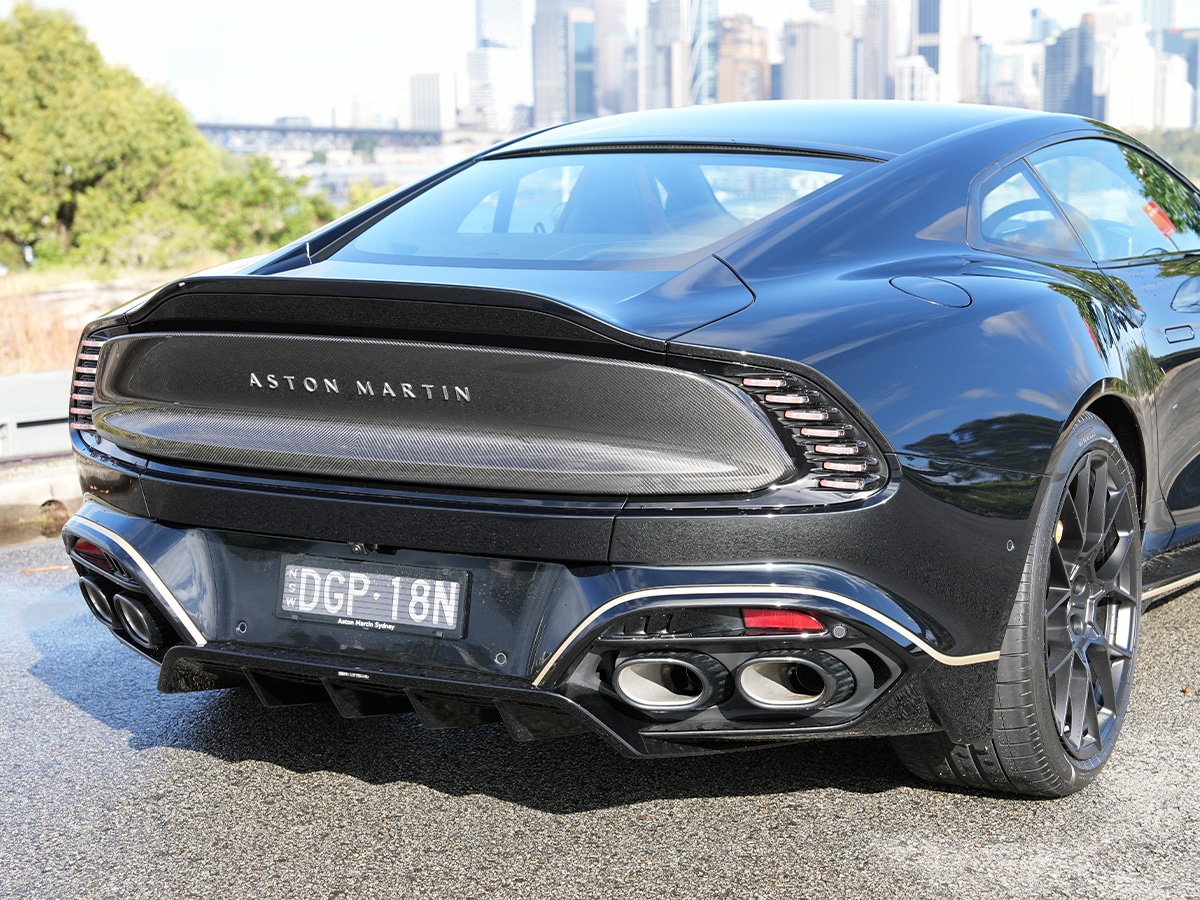

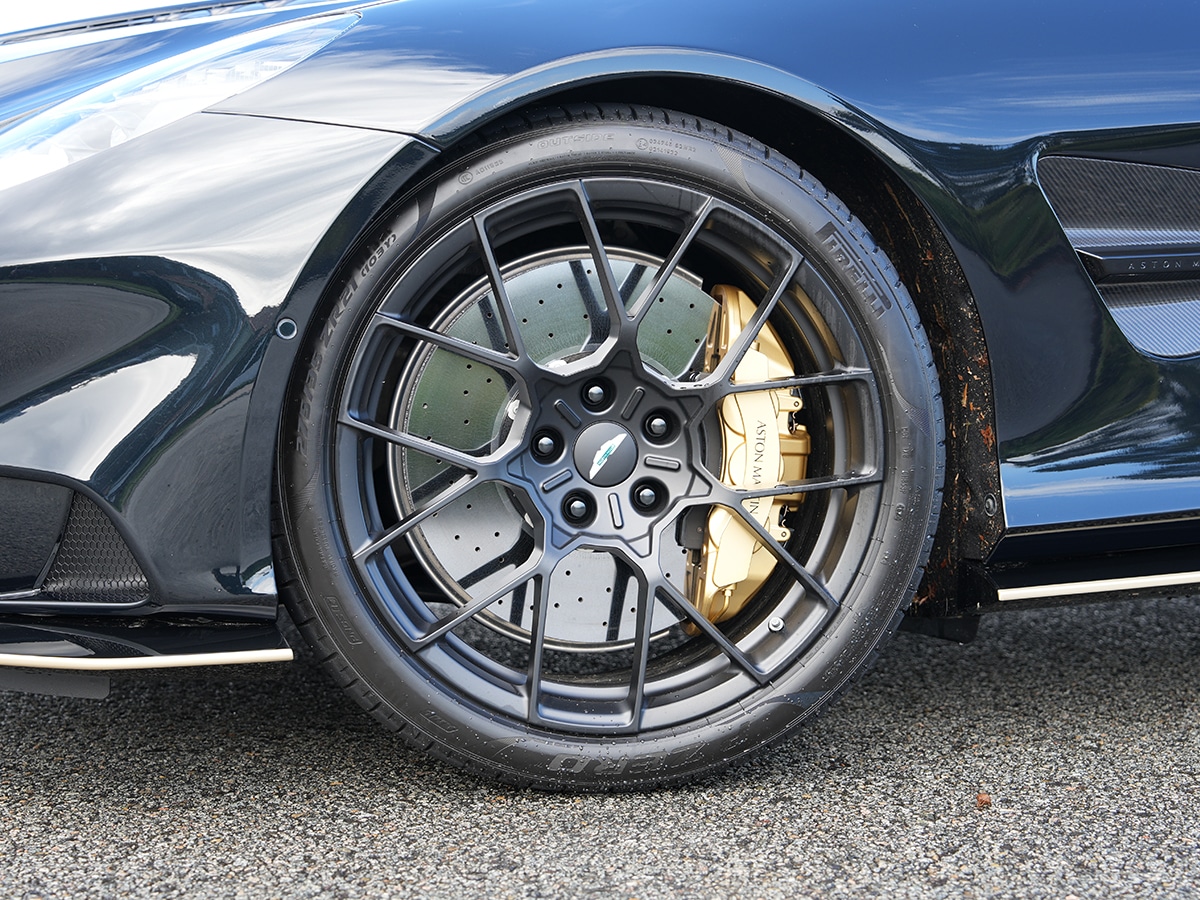
Electronically deploying flush-fit door handles keeps the body lines smooth, even though they’re a little annoying to open and close when your hands are full.
On the bonnet, real F1-inspired NACA duct louvres are included to help cool down that twin-turbo V12, and it needs it. Park the Vanquish after a spirited drive, and you can see and feel the heat exiting the engine bay. The enlarged vaned grille up front also helps this cause, and it has a +13% airflow increase compared to the DBS 770 Ultimate.
Inside, a panoramic glass roof comes as standard for the first time on a V12 Aston Martin, and it has a 6% light transmission with low-e coating to block UV-A and UV-B. While there’s no shade, I never found it to be a problem.
Of course, technology is cleverly interspersed with the design. Matrix LED headlights with a new DRL signature and etched Aston Martin branding are found up front. Last but not least, those distinctive rear LED Light Blades (from Valkyrie) at the rear are made of seven individual blades. The distinguishing feature that lets everyone know you’re in a Vanquish, not a DB12.

Interior Design and Technology
Since billionaire owner Lawrence Stroll took over, the interior quality of Aston Martins has increased tenfold. Gone are the outdated Mercedes-Benz screens and controls, replaced by in-house-made screens, switches, and dials.
Take a seat, and you’re instantly encapsulated in Bridge of Weir leather. I’d believe you if you told me I was sitting inside a Bentley. It’s the closest thing to sitting in a designer handbag outside of a Rolls-Royce Ghost Series II.
The design of the interior might remind you of the new DB12 and Vantage, but it has a bespoke layout. Still, it keeps critical driver controls centrally mounted and physical. This includes override switches for chassis, ESP and exhaust, lane assist, cameras, and park distance control. The illuminated glass engine start/stop button (with drive mode controls) is found in the middle of the console, where it glows a tempting red to start.
Behind the driver, two seat-like shelves, and this is where you add your custom saddle leather luggage set. It fits perfectly into the sculpted rear cross brace and matches your interior, and considering the small size of the boot (248 litres), it’s probably worth ticking that option box.
Sports Plus Seats are standard, and they’re exceptional. They don’t give you the shock value like the seats in the Ferrari 12Cilindri, but those buyers who prefer to sacrifice their back and buttocks in search of a few tenths on the track can opt for the carbon fibre Performance Seats like those in my Vantage tester.

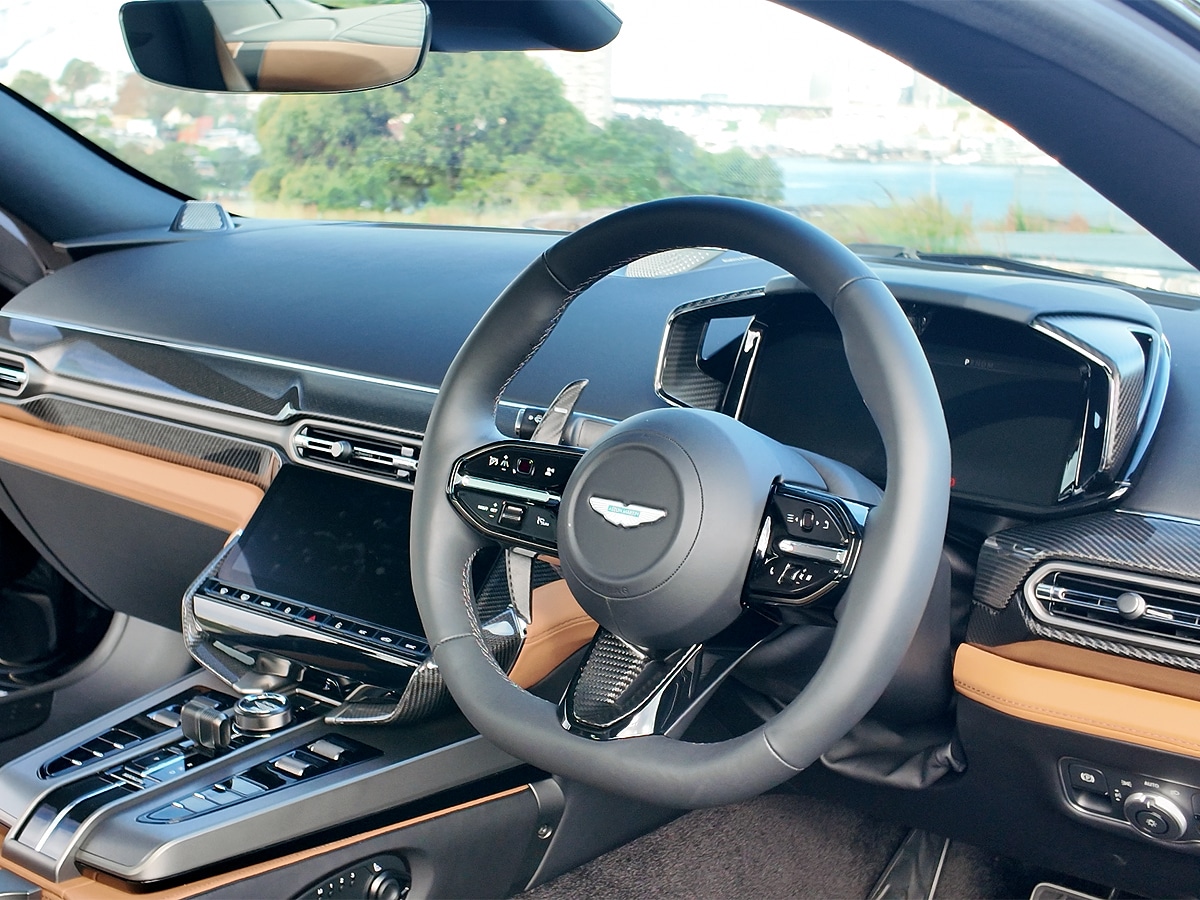
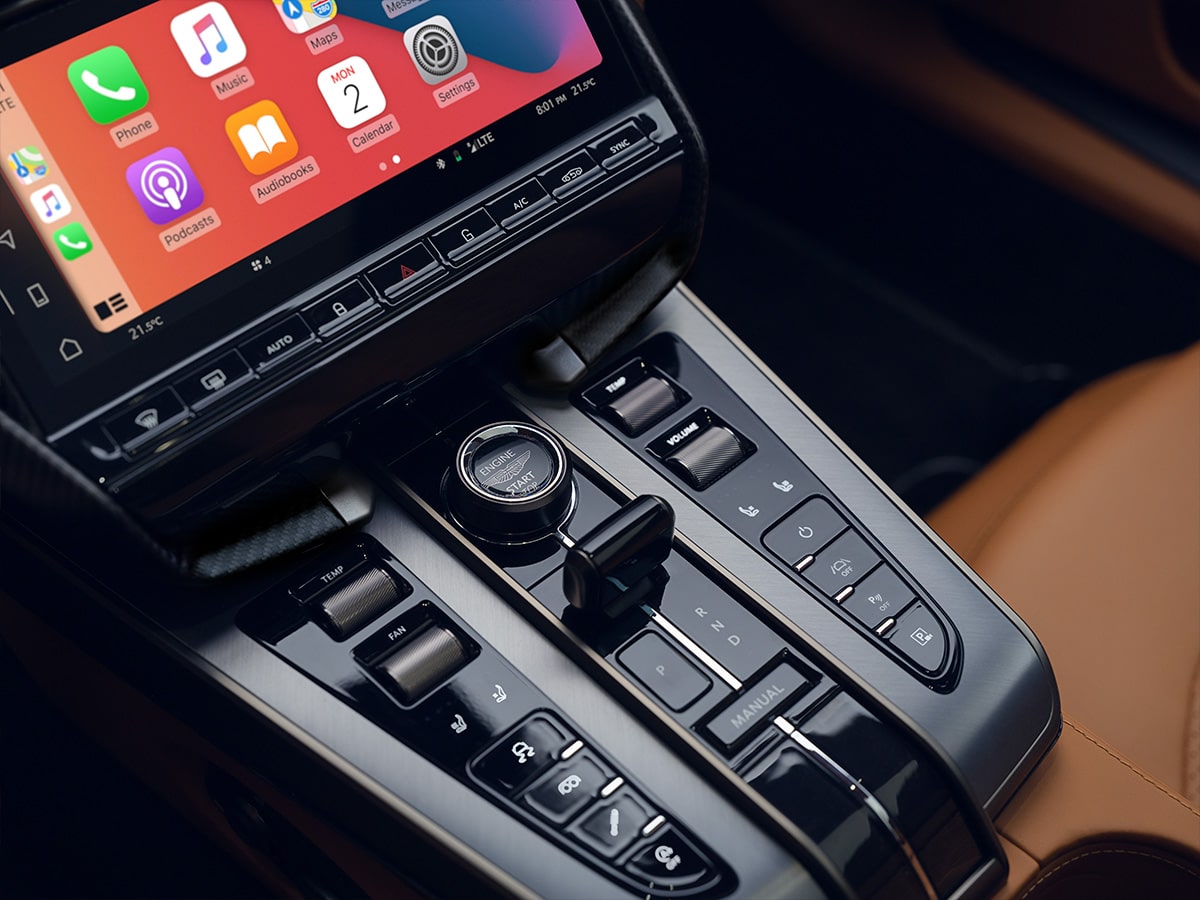

Like the DB12 and Vantage, technology is cutting-edge, with a fully digital 10.25-inch TFT driver display and a matching 10.25-inch Pure Black touchscreen system with full online connectivity and wireless Apple CarPlay.
It’s the right size, it doesn’t dominate the cabin, and it’s not complicated to use. You get in the car, Apple CarPlay fires up, you dump your phone on the wireless charger in the glovebox, and you go for your drive. When the occasion calls for it, this infotainment system is backed by a standard 15-speaker Bowers & Wilkins sound system that sounds almost as good as the V12 engine under the bonnet. Only the 23-speaker Bowers & Wilkins system in the DBX707 can best it.
My only real complaint is how European regulators force the annoying speed-limit warning chime to be stuck deep into the touchscreen display. You don’t need or want to be told to slow down when driving a $1 million twin-turbo V12 sports car, but it seems there’s nothing Aston Martin can do about it.

Engine and Gearbox
Engine: 5.2-litre Twin Turbo V12
Configuration: Front mid-mounted engine, rear-wheel drive
Maximum power: 835PS / 824bhp / 614kw @ 6,500rpm
Maximum torque: 1,000Nm / 738 lb-ft @ 2,500 – 5,000rpm
Top speed: 214mph / 345km/h
Acceleration 0-100km/h: 3.3s
Somehow, Aston Martin has shoehorned the engine everyone wanted under the bonnet, continuing the 25-year dynasty of V12-engined flagships with the most powerful V12 engine in its core sports car range. “It was inconceivable that a new Aston Martin flagship should be powered by anything other than a state-of-the-art V12,” said Aston Martin Chief Technical Officer, Roberto Fedeli, at launch.
Just the idea of V12s still existing is enough for car enthusiasts to sleep easily at night, but it’s doubly impressive to see that Aston Martin isn’t interested in “educating” (persuading) its customers that hybrid is what they should be excited about. Would you want to see a hybrid V8 under the bonnet? Of course not. However, this choice might have something to do with the limited production of 1,000 cars per year, likely based on fleet emissions.
Power is immense, as expected. You’re looking at the highest specific power output ever from an Aston Martin V12 engine at 160PS/litre, 835PS (824HP, 614kW) of power @ 6,500rpm, and 1,000NM of torque @ 2,500 rpm.
This is achieved with a strengthened cylinder block and conrods, redesigned cylinder heads incorporating reprofiled camshafts, plus new intake and exhaust ports. There are also repositioned spark plugs, new, higher flowrate fuel injectors, and higher speed, as well as reduced inertia turbochargers that deliver increased performance and throttle response. The sound produced is unholy, with a V12 scream out the rear, and a turbo induction sound from the front that gives you the impression that its sucking the tarmac off the road.
Power is sent to the rear wheels only via a ZF 8-speed automatic gearbox, paired with an electronic rear limited slip differential (e-diff) for the first time in an Aston Martin front-engined V12 sports car. Like some of the new Porsche Taycan electric vehicles, there’s a new Boost Reserve function, if you have the guts to use it.
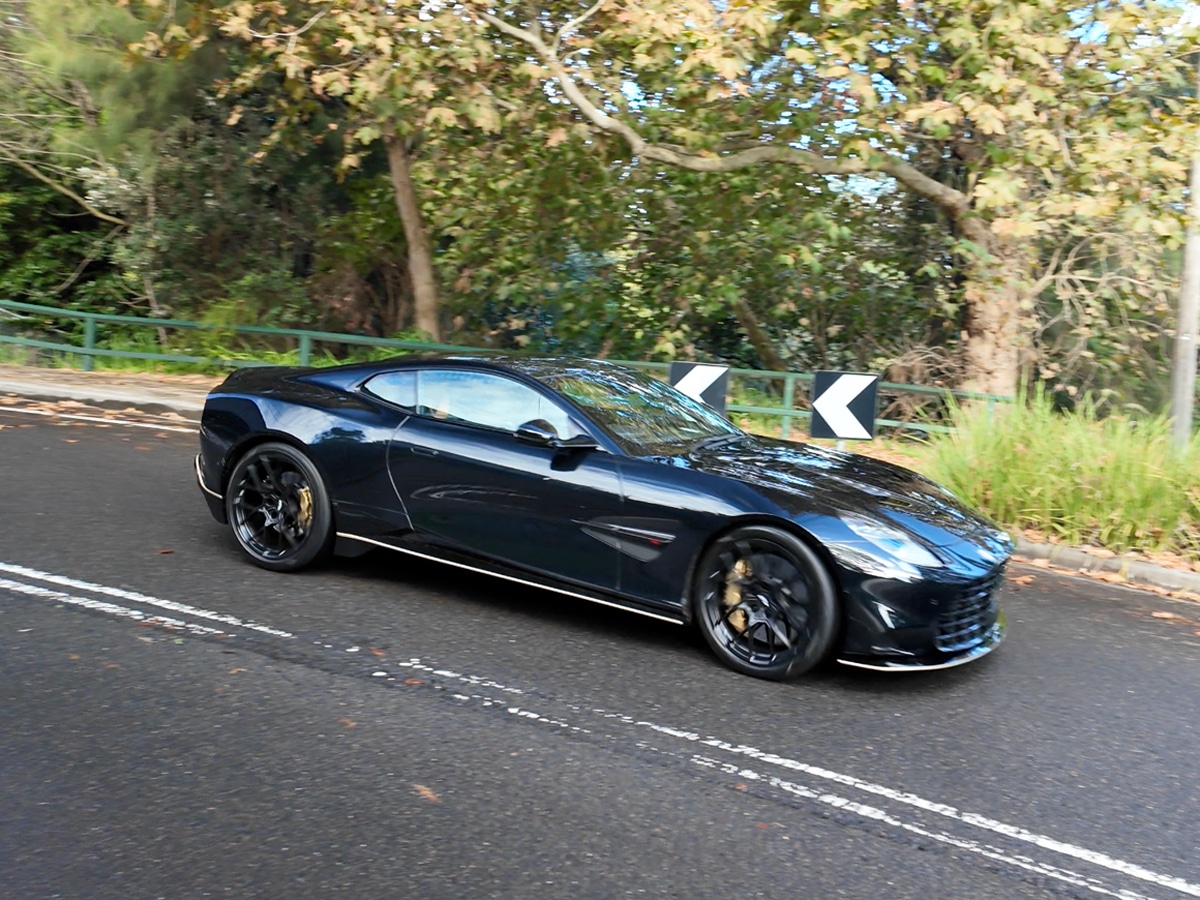
Performance and Handling
Yeeesh! I’m not sure why I went into this expecting anything but sheer unadulterated power, but the first squeeze of the throttle in the Aston Martin Vanquish left me a little winded.
On paper, the 835PS (824HP, 614kW) power figure is so impressive that you forget there’s 1,000NM of torque available from just 2,500 rpm. Like I experienced in the Vantage, it can catch you off guard if you feed too much power in through the mid-corner in a high gear. However, when you finally get the car straightened out, the way the rear squats, the AML-specific 21-inch Pirelli P ZERO tyres dig into the tarmac, and catapult you forward gives you shivers of addiction.
Gorgeous looks hide just how devilish the Vanquish is. It’s one of the quickest cars I’ve driven, and I can only liken it to the Lamborghini Revuelto for pace.
The high-revving V12 in the Ferrari 12Cilindri can keep pace with the Vanquish, but it’s an entirely different driving experience. It delivers peak power higher up in the rev range, so you have to wind the engine out near its 9,500 rpm redline to get it to feel like a ballistic missile. This isn’t a problem, as you want to hear the V12 scream, but by the time you get there, you’re into jail territory. The Vanquish feels quicker, naughtier.
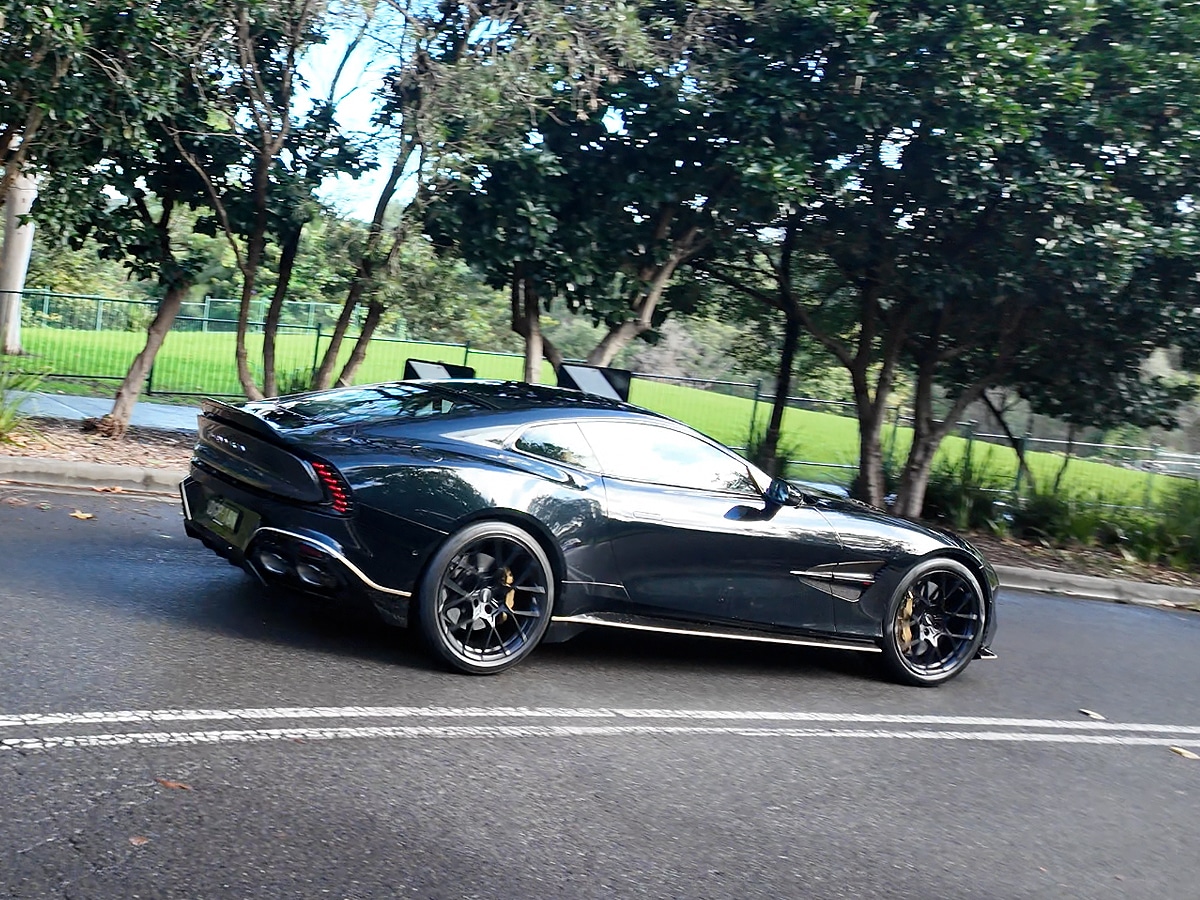
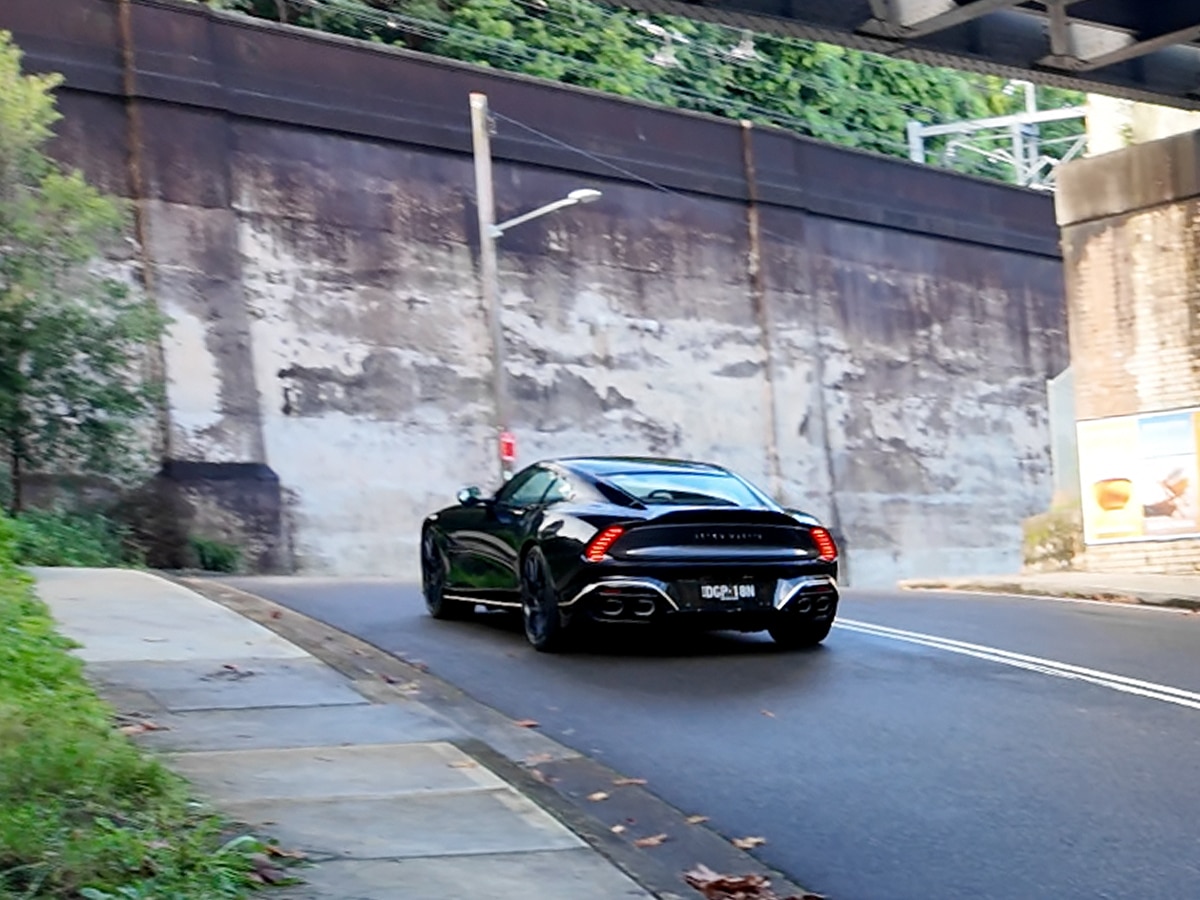
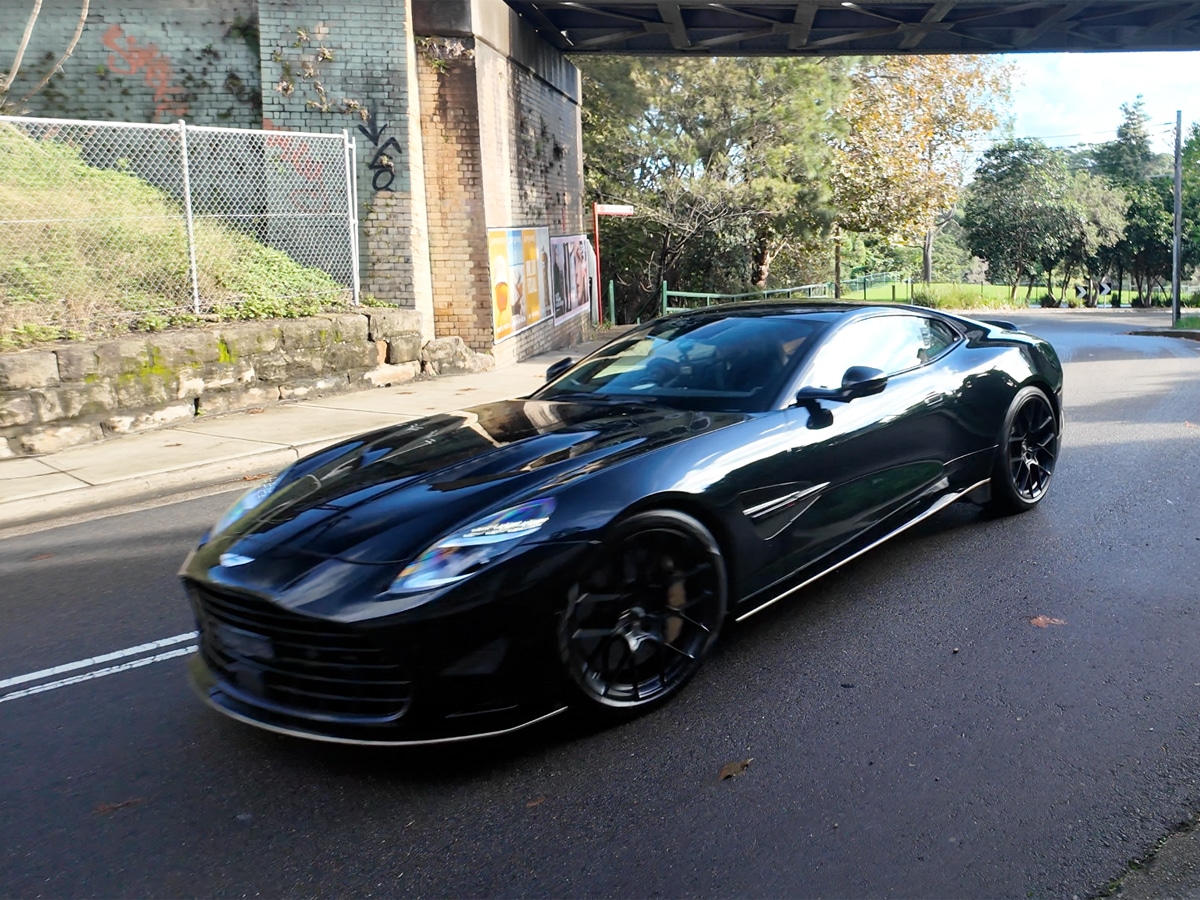

When you throw a few corners at the Vanquish, it shows that it’s not all brute and brawn. There’s a poise and agility to the car that you might not expect.
The brand has achieved this by making significant changes to the structure, including a 75% increase in lateral stiffness over the DBS770 Ultimate. They’ve also lengthened the wheelbase (80mm) and added Bilstein DTX damper technology from the new DB12, but with a bespoke calibration for more efficient damping performance in Sports and Sport+ modes.
Larger diameter anti-roll bars (ARB) are added alongside recalibrated Electric Power Assisted Steering (EPAS) with variable speed-sensitive assistance and 2.27 turns lock-to-lock. Those enormous (gold), 410mm carbon ceramic brakes are standard, helping reduce unsprung weight (-27kg compared to cast iron brakes) and pulling up this sports car from ungodly speeds in a matter of metres.
Like the Mercedes-AMG GT R, the long nose provides a unique experience when you throw it into corners. Positioned in the middle of the cabin, you sit closer to the rear wheels than the front, and you follow the nose through the corner as if you’re sitting in the back seats of a roller coaster. It’s an exciting feeling that only comes with long-nose, V12-powered sports cars.
Speaking of which, the 12Cilindri is another one of those cars, and while neither of these sports cars is a track weapon, the Ferrari feels more agile when pushed to the edge.
It all comes down to the weight. Both are V12-powered, but the Ferrari 12Cilindri has a claimed dry weight of 1,560 kg (3,439 lbs) vs. the Aston Martin Vanquish, which has a claimed dry weight of 1,774 kg (3,911 lbs). With 214 kg of added weight, the Vanquish was always going to be at a disadvantage on twisty roads. Ultimately, each provides a remarkably different driving experience, and it comes down to personal driving ambitions.

Verdict and Final Thoughts
Having driven so many crazy, expensive things, people often ask me what the best car I’ve ever driven is. Well, I’m here to say that the Vanquish has entered that conversation.
It’s an incredible car, but it stands for something even more important. Not only have Aston Martin created one of the most desirable things with four wheels and an engine, but they’ve brought serious firepower to Ferrari and its grip on low-production, front-engined V12-powered sports cars.
The scream of the Ferrari’s naturally aspirated V12 makes the hair on your neck stand up, but the torquey Vanquish doesn’t back down. It’s more fun to drive every day because of its unhinged power delivery, and it’s the most complete package we’ve ever seen from the brand. Fold the good looks into the discussion, and it becomes a serious conversation. Unchallenged for many years, the Vanquish is the annoying mosquito in Ferrari’s ear.
While the conversation about a hybrid “Holy Trinity” of supercars continues to grow, it’s the V12-powered GT flagships that enthusiasts should be excited about. No matter which side of the fence you sit on!
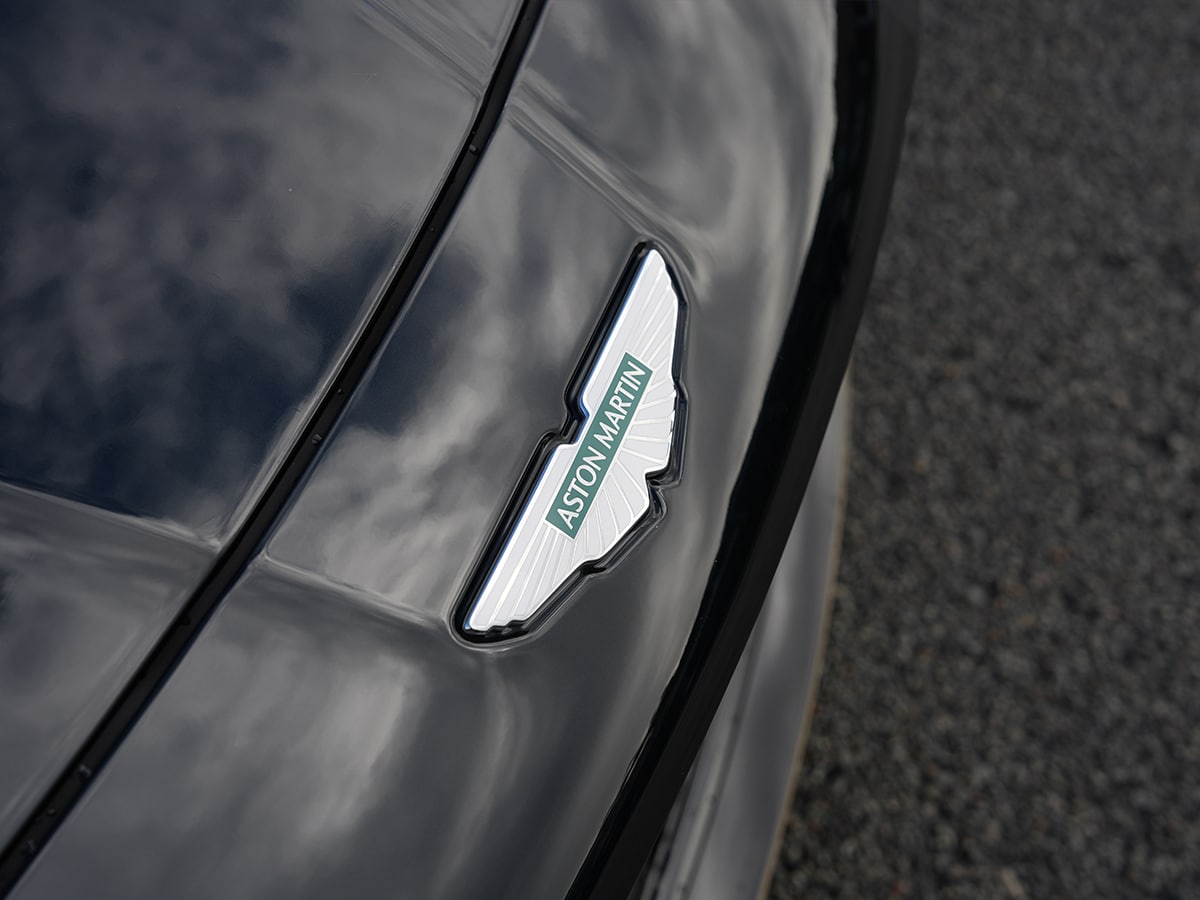






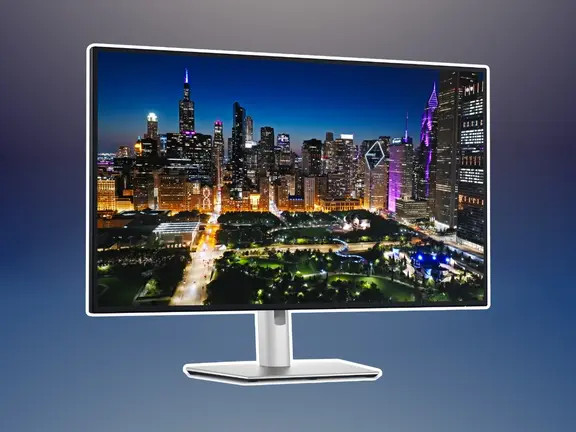







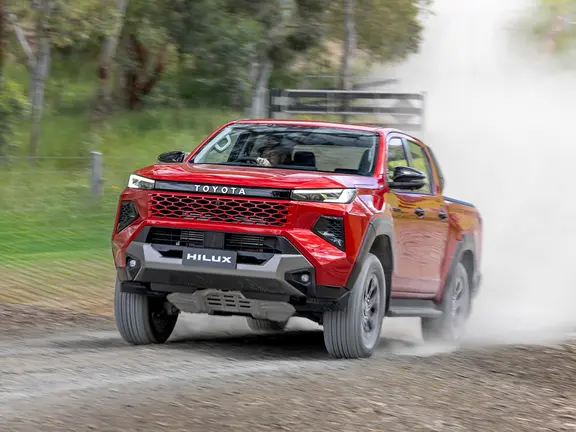

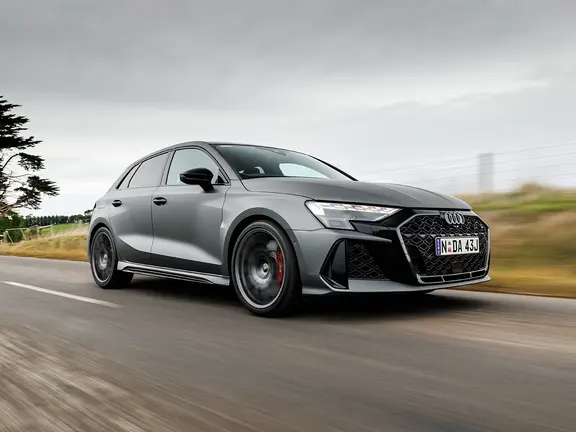



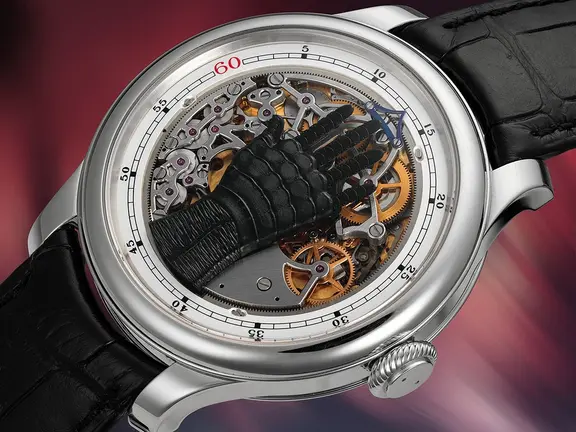











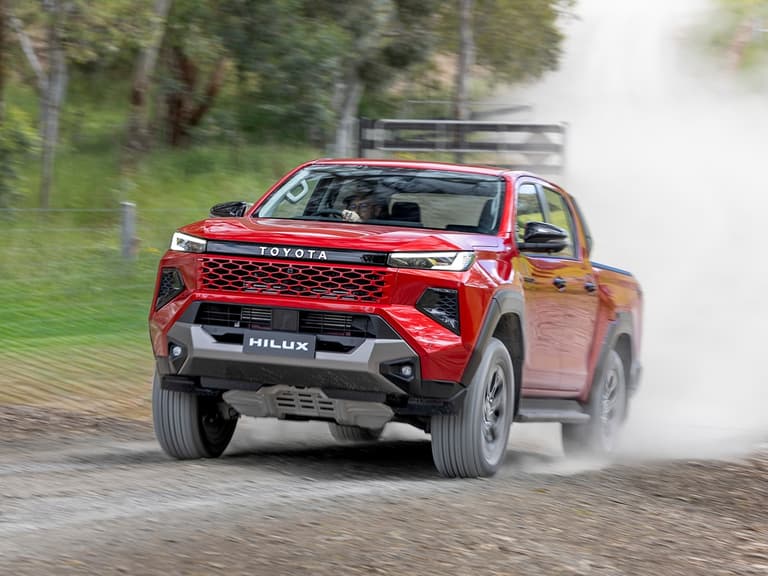
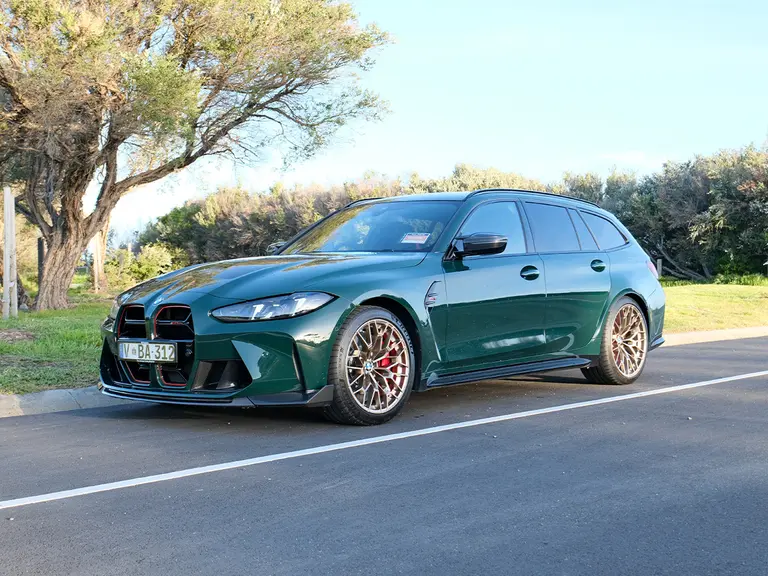
Comments
We love hearing from you. or to leave a comment.